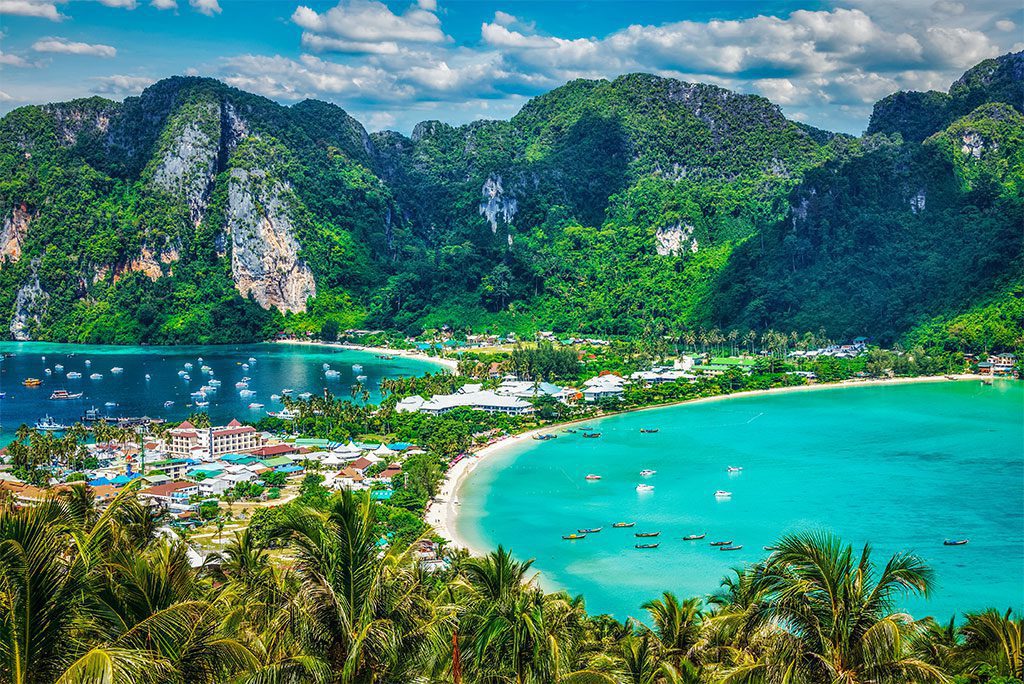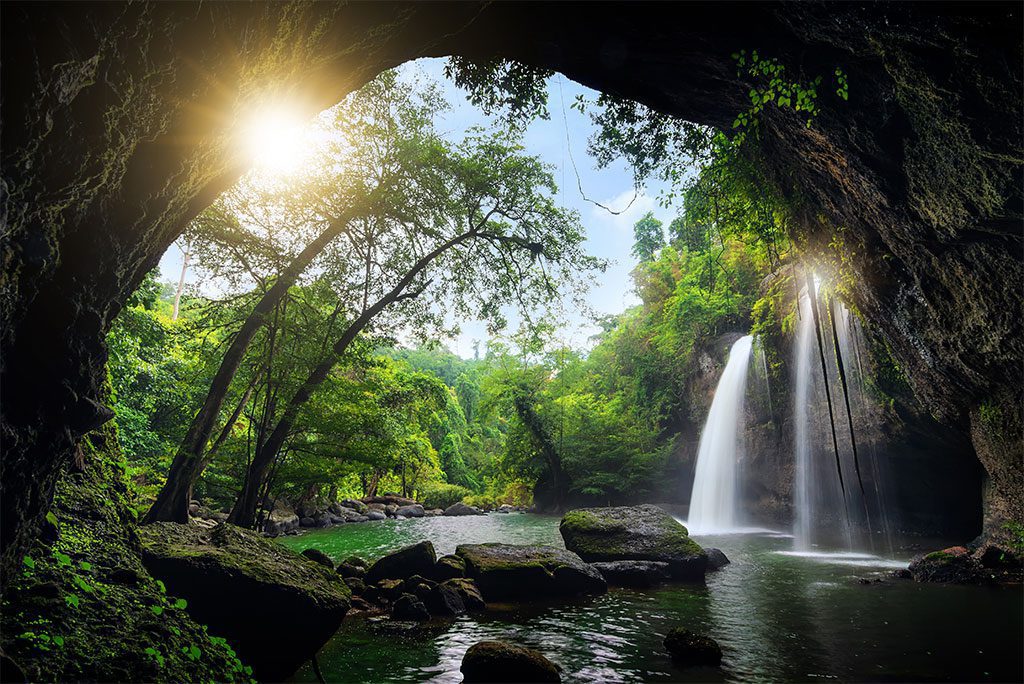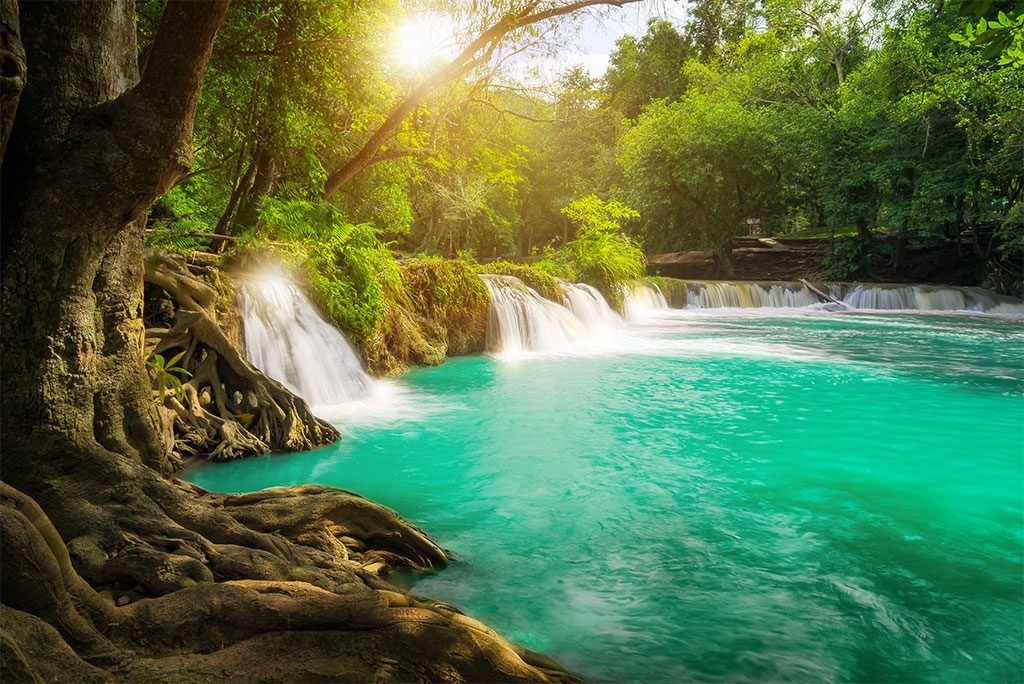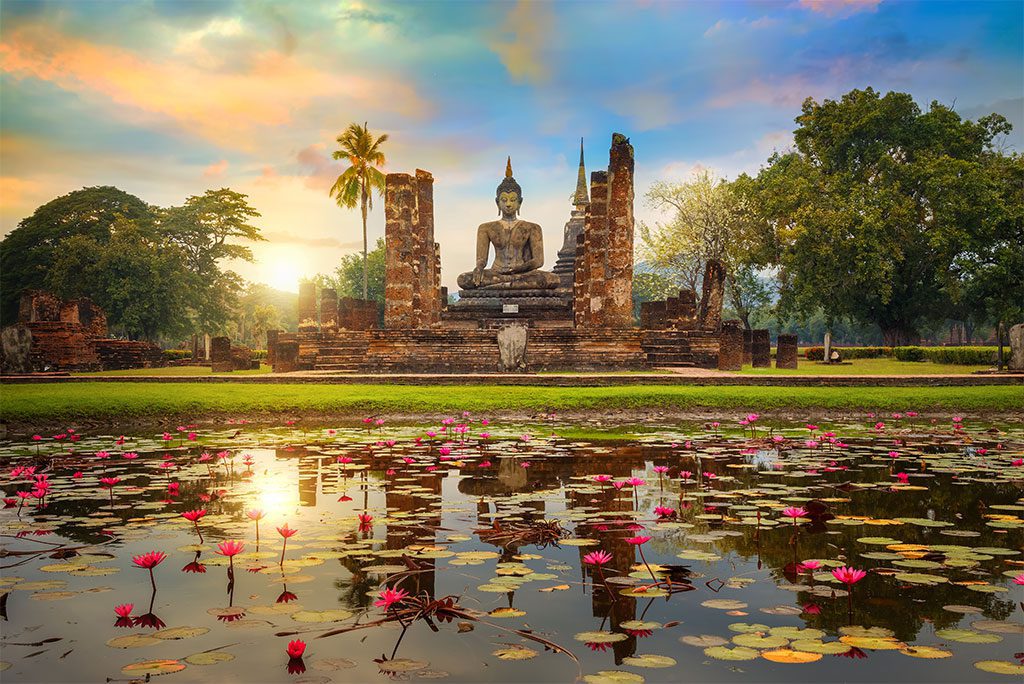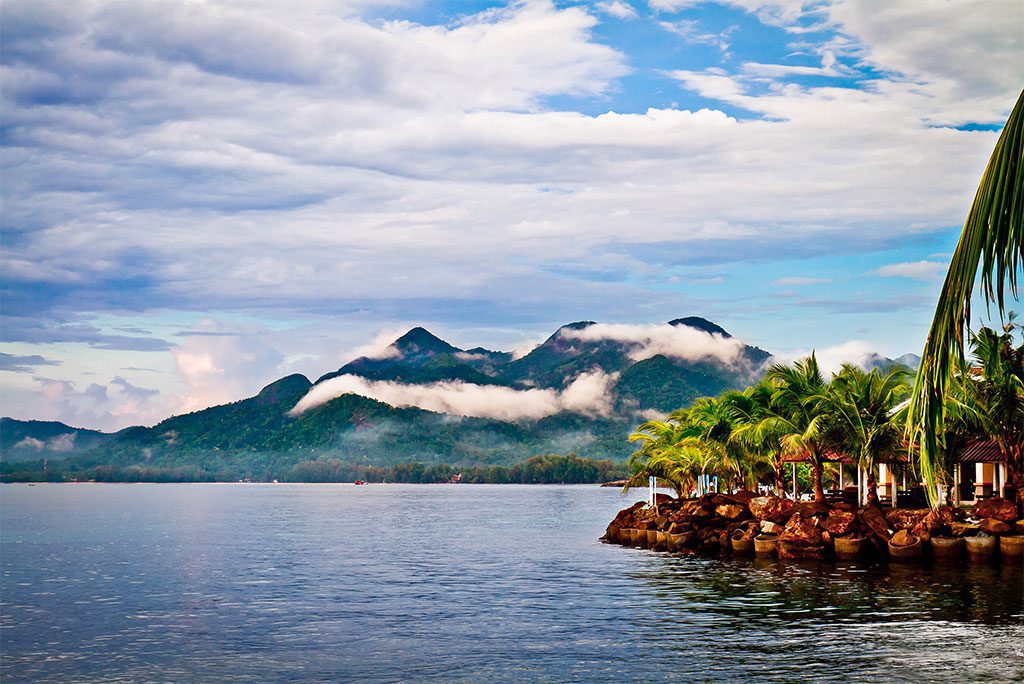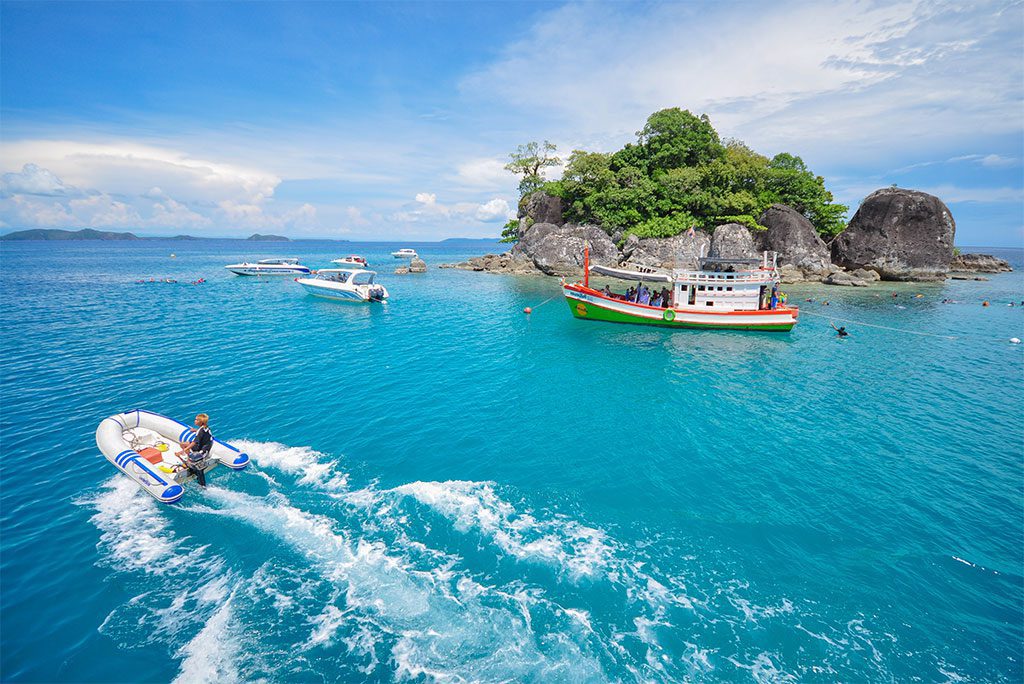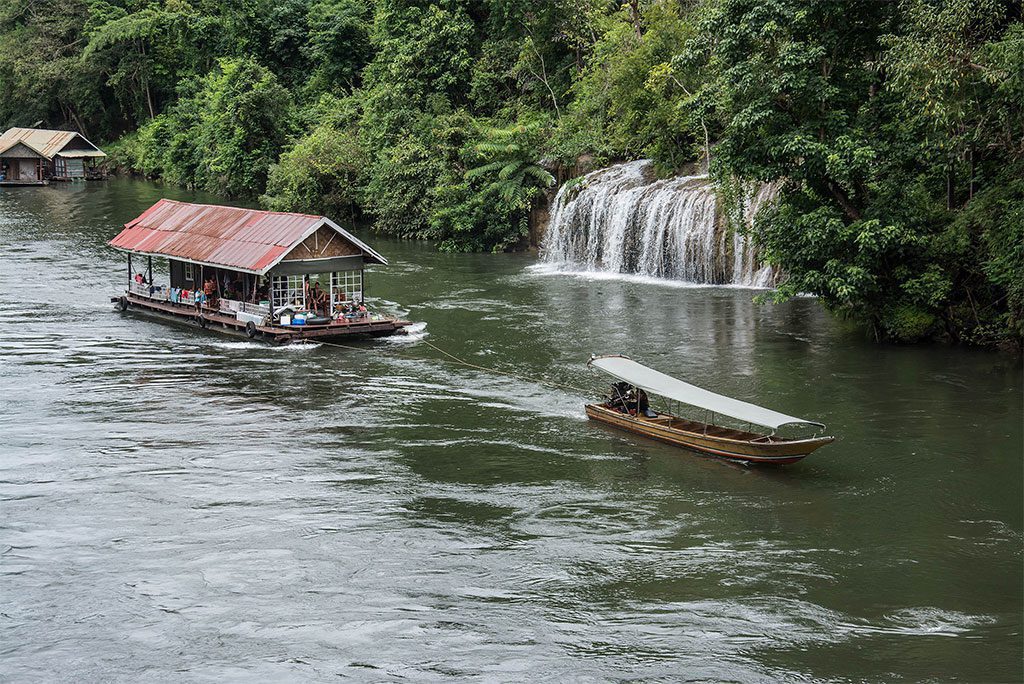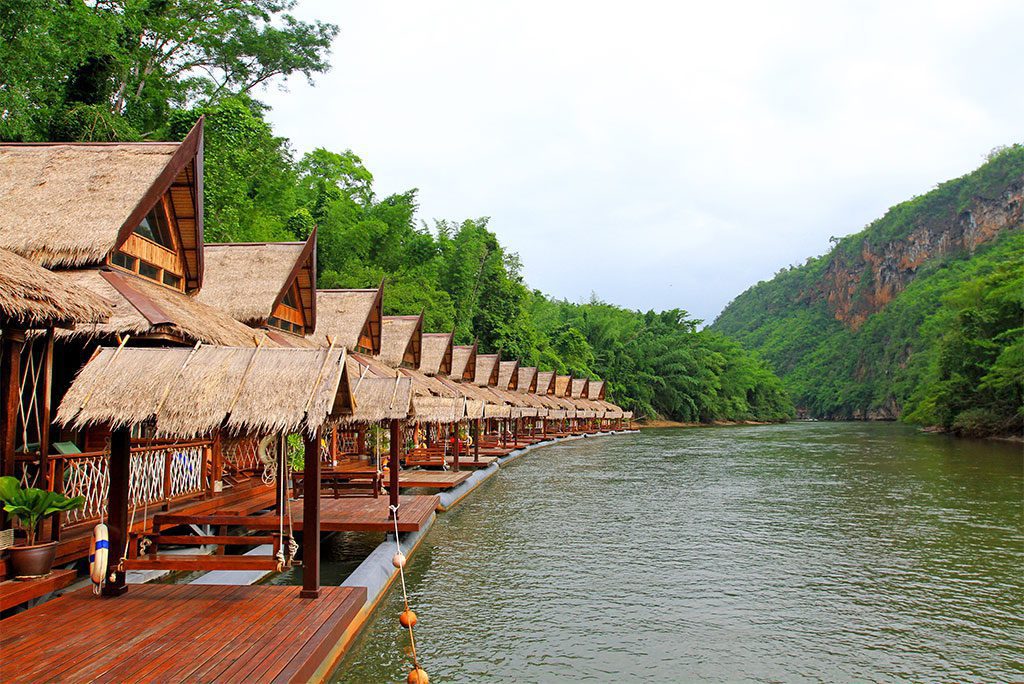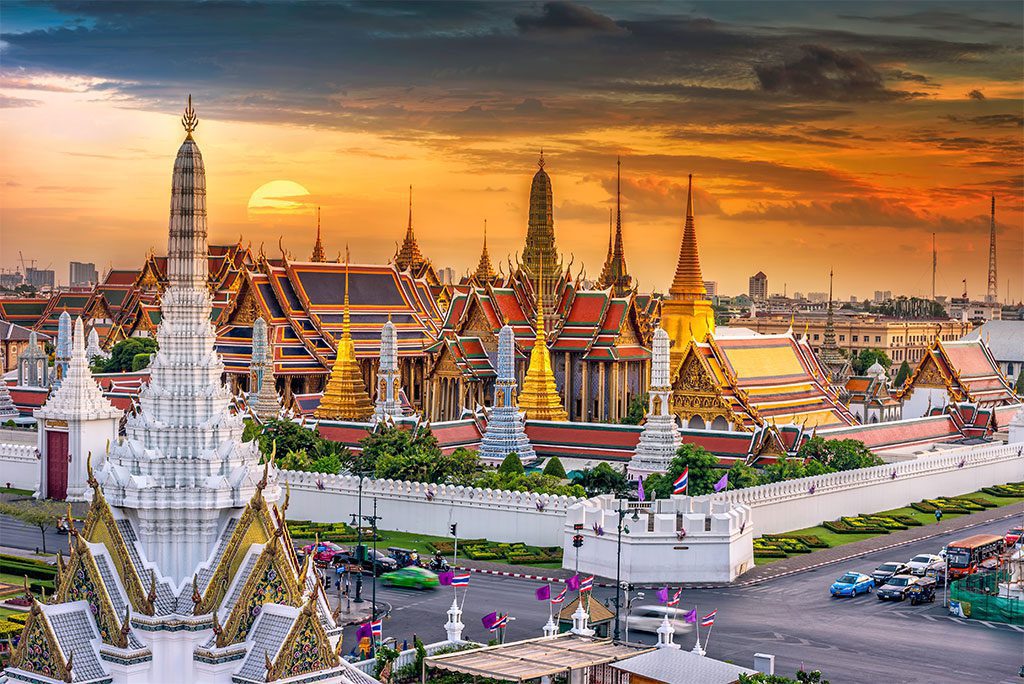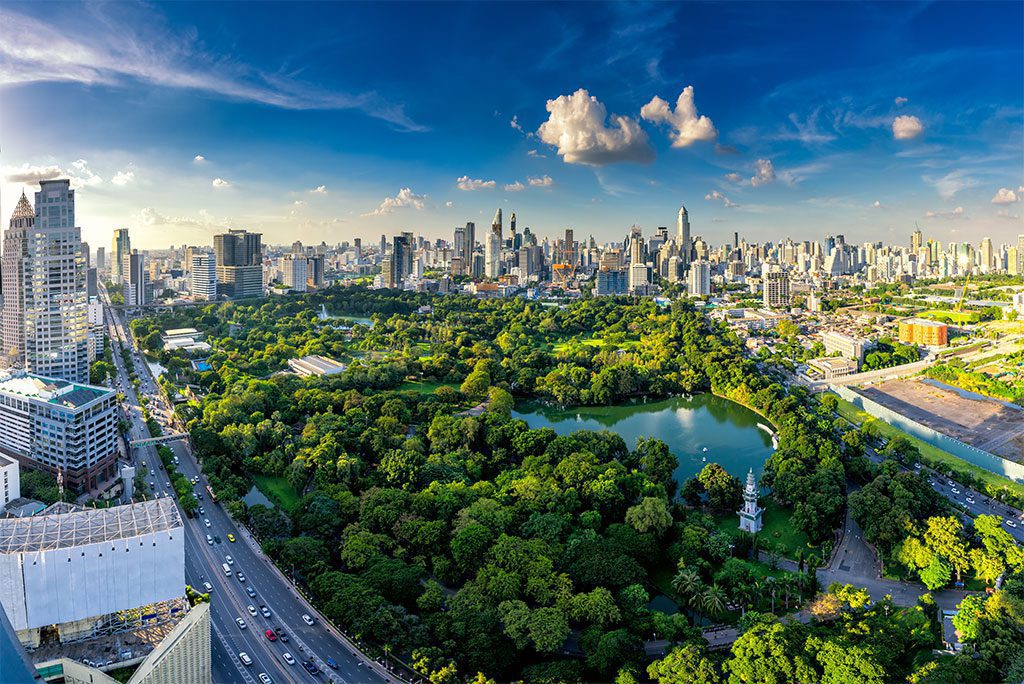Thailand is a country that offers a unique and diverse range of experiences for visitors, with bustling modern cities, ancient ruins, traditional farming villages, and stunning coastlines all waiting to be explored. No wonder it’s the most popular tourist destination in Southeast Asia. The country has its own distinct culture and history, and its people are known for their laid-back attitude and infectious smiles, so it’s no surprise that Thailand has managed to retain its character despite the influx of visitors.
Bangkok, the capital, is often the first stop for tourists. It’s a vibrant city of skyscrapers, temples, floating markets, and street food. Northern cities like Chiang Mai and Chiang Rai are gateways to mountain hiking, national parks, and ethnic tribes. For ancient history, visit Ayutthaya and Sukhothai, while World War II history is present in Kanchanaburi. The stunning southern region offers island paradises like Phuket, Ko Tao, and Ko Samui, as well as beach resort towns like Hua Hin and Krabi.
Thailand has something for everyone. Visitors can enjoy elephant rides, hiking, ziplining, exploring ancient ruins, world-class scuba diving, nightlife, retail therapy, night markets, family amusement parks, and indulgent spa treatments.
The Thai Islands are an ideal destination for those seeking a tropical paradise. Meanwhile, if you’re looking for big cities with plenty of action, Bangkok won’t disappoint. Chiang Mai is an excellent starting point for exploring the country’s mountainous northern region and learning about the various ethnic groups that call it home.
Make the most of your time in this vibrant country by checking out our recommended stops in Thailand. With its diverse offerings, friendly locals, and unique culture, Thailand is sure to captivate and delight every visitor.
17. Ko Phangan
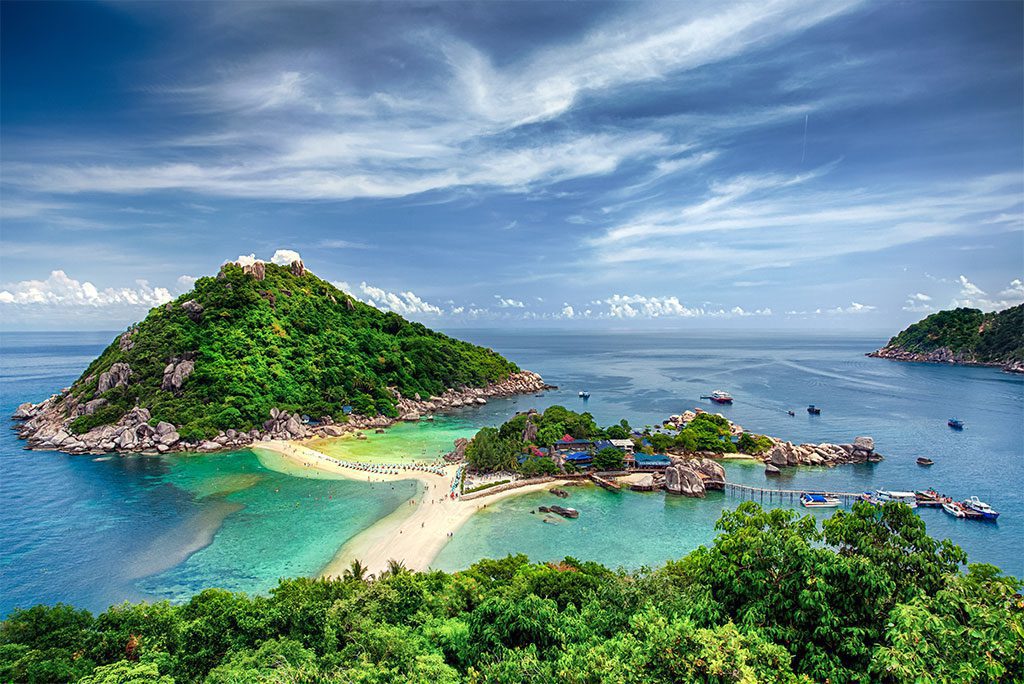
Ko Pha Ngan is the sixth-largest island in Thailand, with both mountainous interiors and sandy shores. Ko Pha Ngan is less developed than its neighbor Ko Samui but nevertheless has a lot to offer visitors, especially those interested in outdoor recreation
In Ko Pha Ngan, scuba diving is a common pastime. Sail Rock, one of the most well-known diving destinations in the Gulf of Thailand, is not far from the island. Also, tourists have a plethora of options for sandy shores since Ko Pha Ngan has more than 30 distinct beaches.
The Full Moon Party on Ko Pha Ngan is famous. On the night of the full moon, Haad Rin Beach becomes a vibrant open-air nightclub complete with live music, powerful drinks, and even fire rope skipping for the adventurous. Every month, between 5,000 and 30,000 people show up for the event.
16. Khao Yai National Park
Khao Yai National Park is the third-largest park in Thailand and is situated in the Sankamphaeng Mountain Range. The park’s terrain is surprisingly varied, given its altitude, with both lush rainforests and open grasslands.
Some of the many waterfalls in Khao Yai National Park can be found deep inside the park’s dense forests. The 260-foot-tall Haew Narok is the park’s tallest waterfall and a must-see attraction. The Haew Suwat Waterfall is similarly beautiful and well worth a visit, although it is much shorter in height. It was used as the location for the famous waterfall leap sequence in the film The Beach.
Khao Yai National Park is a popular tourist destination in part because of its rich variety of animal life. The park is home to a wide variety of wildlife, including pig-tailed macaques, sambar deer, river crocodiles, and Asian black bears. It is also one of the few locations in Thailand where large creatures such as elephants and tigers can be seen often in the wild.
15. Sukhothai
As a result of its proximity to the remains of an ancient city of the same name, the small city of Sukhothai in northern Thailand is a famous tourist attraction. Once known as Siam, Thailand’s first capital was the ancient city of Sukhothai. The Sukhothai Historical Park is home to several temples, palaces, and monuments from this time period.
Different areas of the park house different sets of spectacular stucco reliefs on monuments, including chedis, Buddha statues, and temples that have been discovered throughout the years. The lotus-shaped stupa and relics of the Buddha that are still in place make Wat Mahathat the most spectacular temple.
The Wat Si Chum pavilion, in the park’s midst, holds a large 50-foot seated Buddha. Manicured gardens, underground moats, and glistening lakes can all be found at the Sukhothai Historical Park. The Ramkhamhaeng National Museum is located inside the park and is an excellent resource for learning more about the park’s history through the examination of various artifacts and objects.
Natural landscapes and outdoor activities can be found in nearby Sri Satchanalai National Park and Ramkhamhaeng National Park, all of which are within easy driving distance of the old city.
14. Ko Samui
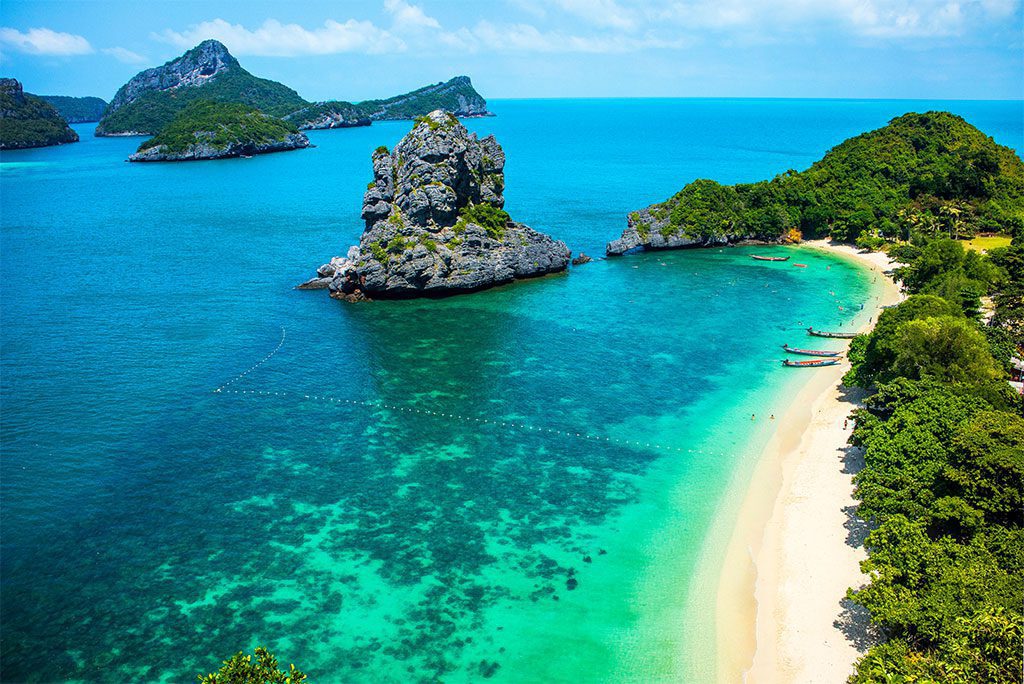
Ko Samui is the third-largest island in Thailand, yet it remained relatively unexplored until two brave travelers arrived by coconut boat in the 1970s. When word got out about Ko Samui’s beautiful beaches, it quickly became one of the most sought-after vacation spots in all of Asia. Ko Samui, unlike the other islands in Thailand (with the exception of Phuket), is home to a major airport.
Ko Samui is more developed than its neighboring island, Phangan, which is known for its lively beachside “Full Moon Parties,” yet it still features a handful of tranquil and isolated beaches. Away from the hustle and bustle of even popular beaches like Hat Chaweng’s four miles of sand, there are quiet corners to enjoy the scenery. Little Chaweng, also known as Chaweng Noi, is located at the beach’s southern end, beyond a small point. There are two small islands offshore, and you can swim to one of them.
Those who want to mingle with locals while on vacation won’t be left wanting. Na Thon, the island of Ko Samui’s transportation center, is teeming with exciting restaurants and nightclubs. Coconut carvings and batik garments, both printed by hand, have made the island famous. It’s definitely worth your time to check out some of the significant Buddhist temples that can be found in Samui.
The temple of Wat Khunaram is home to the mummified bodies of renowned monks. The “Big Buddha,” a sitting Buddha statue measuring 3 meters (9 feet) in height, is the centerpiece of the Wat Phra Yai temple, which was built in 1972.
There are a number of beautiful waterfalls in the mountains of central Ko Samui, including one that drops 65 feet (20 meters) into a swimming pool. The island is surrounded by a well-developed road, so visitors can easily access its many attractions.
13. Chiang Rai
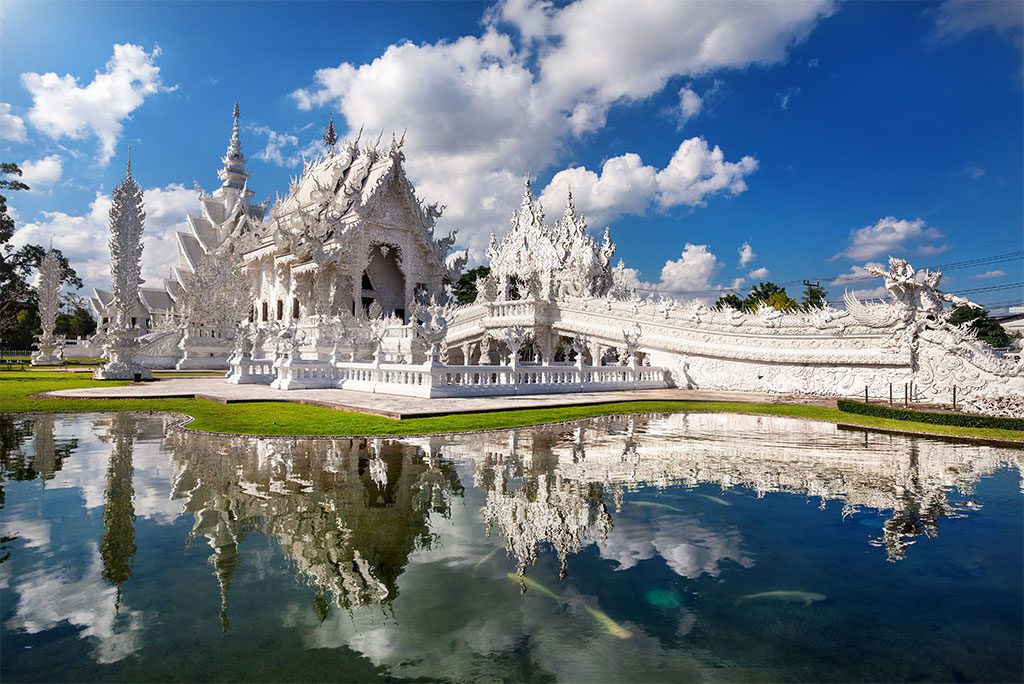
Chiang Rai, in Thailand’s far north, is your gateway to the Golden Triangle, the region bounded by Thailand, Laos, and Myanmar. Chiang Rai is a hub for exploration of the surrounding area and a bustling town with something for everyone. Most of the town’s package visitors leave for day trips throughout the day, leaving the town quiet until the neon lights come on and the souvenir shops and restaurants open.
There are also a number of museums in the city that showcase regional history, art, and culture. Saun Mai Ngam Park is a great spot to relax or celebrate the end of the year with a flower festival thanks to its beautiful landscaping. Food, souvenirs, and free cultural acts can all be found in the markets and the night bazaar. It’s common practice to have picnics and take riverboat rides on Chiang Rai Beach.
The Gate of Siam, located just outside of Chiang Rai on the border with Laos, is a unique spot with breathtaking scenery. There are beautiful waterfalls and forest trails to explore in Namtok Khun Kon Forest Park.
There are beautiful views, hiking routes, and picnic sites all around Lion Hill Cave. Chiang Rai is home to a number of tour operators that take visitors to the surrounding hill tribes to learn about their unique customs and culture.
12. Pai
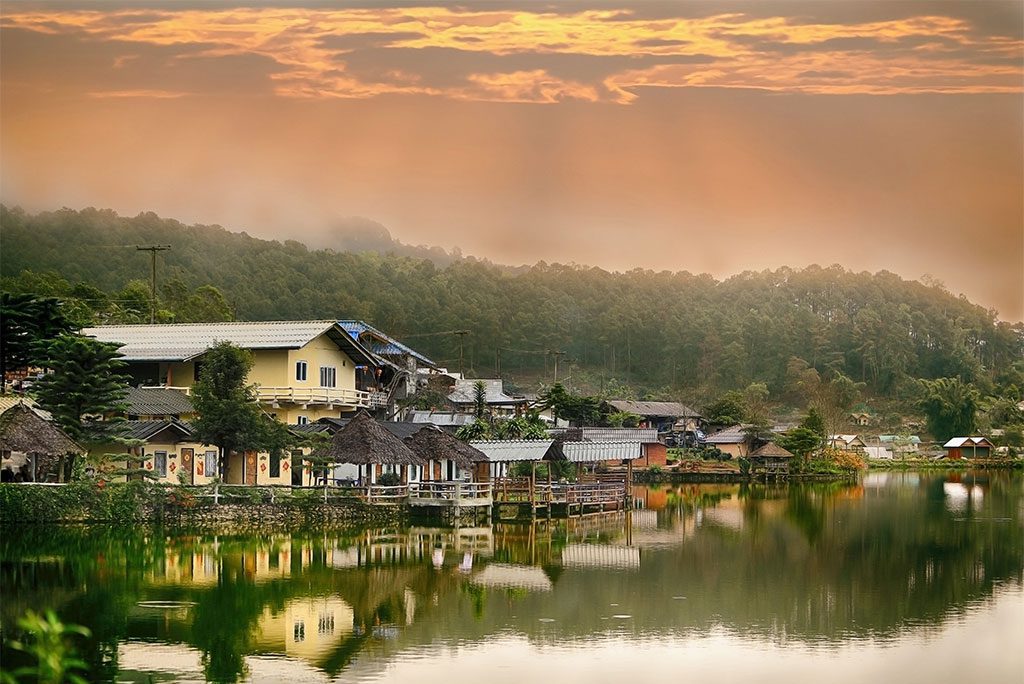
Originally a peaceful village, Pai in northern Thailand is today a bustling town on the Chiang Mai–Mae Hong Son–Pai (Mae Hong Son Loop) highway. Backpackers and visitors looking to unwind in a beautiful setting frequent Pai for its scenic valley and laid-back vibe.
The city of Pai has expanded its hospitality industry to accommodate the growing number of visitors, with the opening of various hotels, restaurants, stores selling souvenirs and alcohol, and other establishments. Visitors come from all around the Pail Valley to shop at Pai’s Wednesday Market.
Many visitors utilize the city of Pai as a jumping-off point for trips to nearby natural sights, hiking tours, and visits to the Lisu, Karen, Lahu, and Hmong hill tribes because of its convenient location at the base of the mountains.
The city’s outskirts also provide a number of spas, elephant camps, hot springs, and scenic waterfalls. You can also go tubing or whitewater rafting on the Pai River. Pai Canyon, the WWII Memorial Bridge, and a Chinese village with a human-powered Ferris wheel and tea shops are among the region’s popular attractions.
11. Phanom Rung
Located in the northeastern part of Thailand, on top of an extinct volcano, lies the Hindu temple complex of Phanom Rung. Dedicated to the Hindu deity Shiva, this temple sanctuary was constructed by the Khmer civilization in the village of Nang Rong some time between the 10th and 13th centuries. Phanom Rung, made of sandstone and laterite, is a representation of Mount Kailash, Shiva’s holiest site.
There are four times a year when the sun can be seen streaming through all fifteen of the sanctuaries’ doorways, since the building is oriented toward the east. Around the time of the alignment in April, villagers celebrate the Phanom Rung Festival with both traditional Brahmin rituals and cutting-edge light and music displays, extending the park’s hours especially for the occasion.
10. Phuket
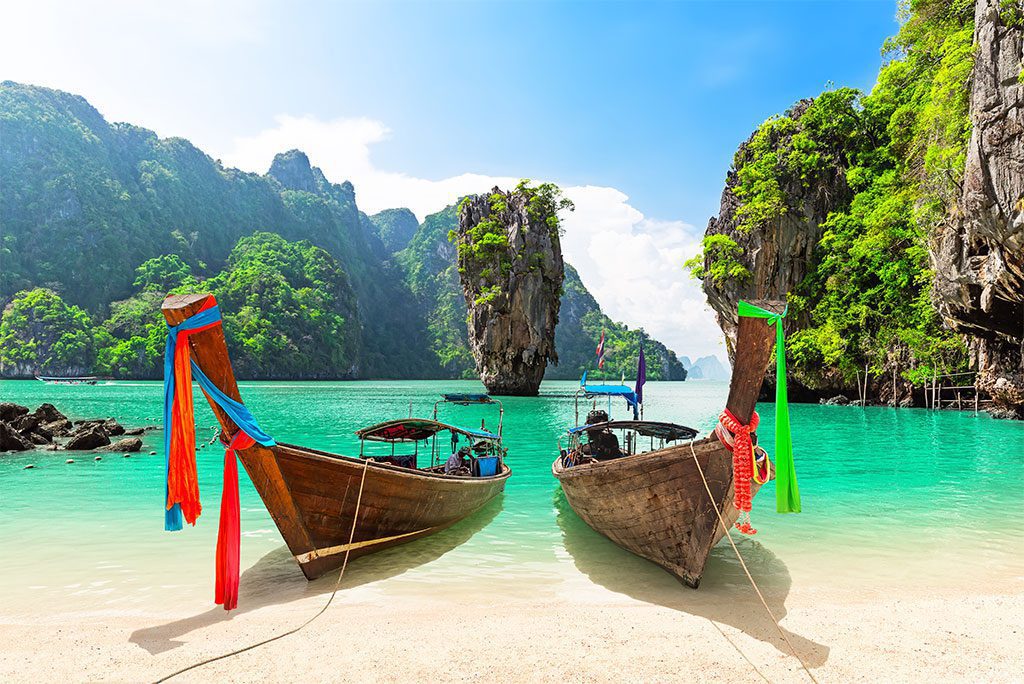
Phuket, Thailand, is the most popular vacation spot in all of Thailand due to its beautiful beaches, world-class scuba diving, and availability of high-end spas. Phuket is the biggest island in Thailand and is linked to the mainland by two bridges in the country’s southern region.
Phuket’s beaches are among the island’s most popular tourist draws due to their white sands, blue waters, and abundance of water activities. Patong Beach has the most resorts, hotels, shops, restaurants, and lively nightlife of any beach in Phuket. The stunning caverns, underwater grottos, and limestone islands of Phang Nga Bay will leave you with unforgettable memories of your trip to Thailand.
Phuket is also a great place to relax and get pampered, with everything from massage tents on the beach to five-star spas in picture-perfect locations. From museums dedicated to seashells and fish to national parks where you can go whitewater rafting, sea kayaking, scuba diving, and jungle trekking, the world is your playground.
9. Khao Sok National Park
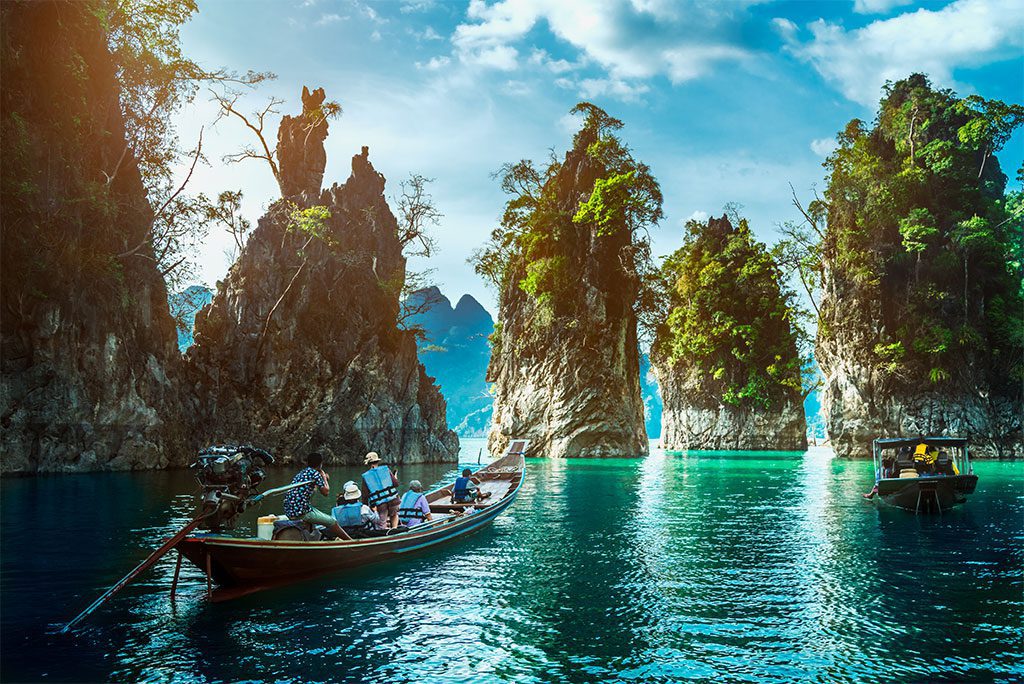
Amazing natural scenery can be seen at Thailand’s Khao Sok National Park, which is surrounded by high limestone mountains and lush tropical forests. It’s been around for 160 million years, making Khao Sok National Park older than the Amazon rainforest.
Cheow Lan, a beautiful turquoise lake where people live on floating rafts and go about in brightly painted long-tail boats, serves as the park’s focal point. The park is especially notable for housing the biggest remaining tract of undeveloped rainforest in southern Thailand. Waterfalls, tunnels, and stands of wild fruit trees are just some of the sights that await forest explorers. Ziplining, kayaking, and tubing down the Sok River are other options.
Many visitors go to Khao Sok not only for the beautiful landscape but also to see the wide variety of animals that call it home. Researchers estimate that more than 5% of all species on Earth may be found inside the park’s boundaries. Sightings of bigger species like Asian elephants and tigers are uncommon, but encounters with smaller critters like Malaysian tapirs, wild boars, and pig-tailed macaques are not.
8. Ayutthaya
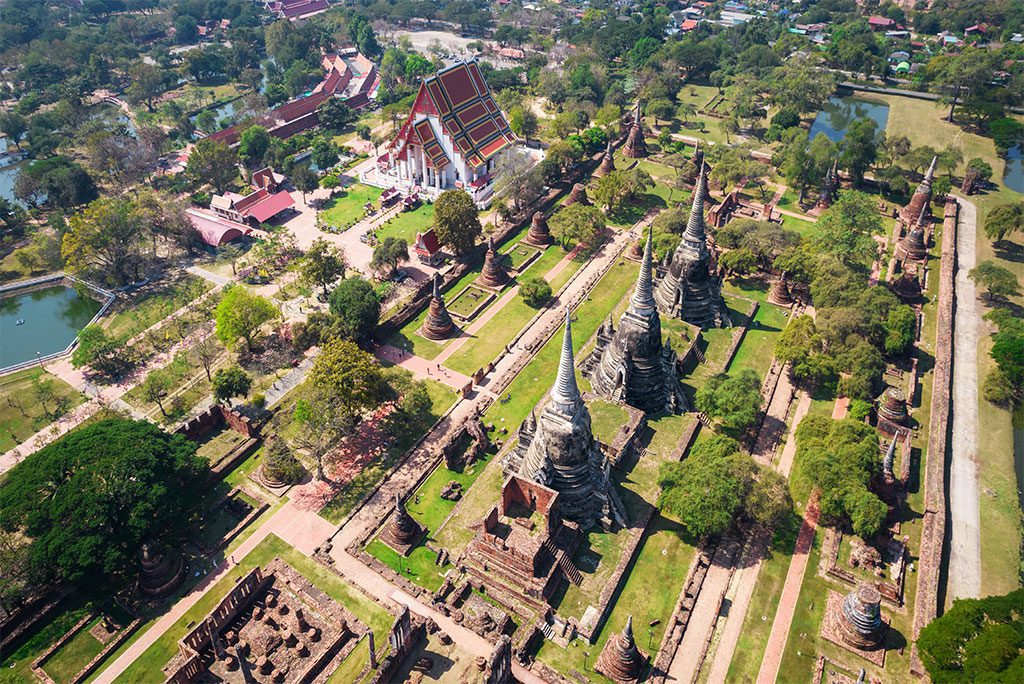
Ayutthaya is a city in central Thailand, founded in the valley of the Chao Phraya River. There are three rivers that flow around the island and into the Gulf of Siam. It was there that King U Thong declared it to be the new capital. Formerly hailed as “the most magnificent city on earth,” the ruins of Ayutthaya are now a popular stop for tourists in Thailand.
Ayutthaya, the ancient Thai capital, was a magnificent city with three palaces and more than 400 temples. The city was at its peak from the 14th through the 18th centuries. The population was close to a million by the year 1700. The city of Ayutthaya developed into an important commercial and transit hub between the Western world and the Asian continent.
Ayutthaya fell to a Burmese invasion and subsequent conquest in 1767. Relic towers, monasteries, temples, and palaces that were previously opulent were mostly destroyed in the invasion. Some buildings, however, remain intact and can be visited by curious sightseers.
Ayutthaya is home to several archaeological sites, some of which are concentrated in the western part of the island while others are more dispersed. Wat Phra Mahathat is one of the most visited temples. This location is home to a sandstone Buddha statue whose head has been intertwined with the Bodhi tree’s roots.
At Wiharn Phra Mongkhon Bophit, both Buddhists and non-Buddhists can see one of the most revered representations of the seated Buddha. Phra Buddha Triratana Nayok, the biggest gilded Buddha statue in Thailand, can be found in Wat Phanan Choeng. It is one of the most revered sitting Buddhas in Thailand and stands at about 20 feet tall.
You can get to this modern city approximately 80 kilometers (50 miles) north of Bangkok via the train, bus, or van. Most tourists just spend a day in Ayutthaya from Bangkok, but if you want to take in the city’s many ruins as well as its friendly locals and delicious cuisine, you should plan to stay for at least a few nights.
7. Ko Chang
Ko Chang, the country’s second-largest island, is found off the southeast coast, not far from the Cambodian border. Long expanses of sand and lush, undeveloped rainforests are just two of the island’s many attractions for tourists seeking a tropical getaway. Scuba diving, kayaking, and jungle hiking are just some of the other exciting things to do on the island.
White Sand Beach is a popular destination for those seeking a more opulent beach experience. The longest beach on Ko Chang can be found in the northwest portion of the island. Many hotels and resorts border the stretch of the sandy beach that lies in the middle.
Travelers on a tighter budget might go to Hat Tha Nam on Ko Chang’s southwestern shore. Visitors can save money by staying in one of the many inexpensive options available, from simple bungalows to unique tree huts, and then utilize that extra cash at one of the many new beachside bars or restaurants.
Hat Khlong Phao is a very beautiful beach on Ko Chang. This lovely beach is a beachgoer’s paradise due to its extreme low and high tides. Laem Chaiyachet, a rock structure with a pier built into it, can be found near the northern end of the beach. You can see the sun go down over the Gulf of Thailand from this vantage point.
Seventy percent of Ko Chang is forested mountains, and hiking to the island’s waterfalls is a great way to get some exercise and cool down from the heat of the day. Namtok Khlong Phlu, the biggest waterfall on the island, is a short stroll from Khlong Phrao Beach. There are really three stages to the waterfall’s descent. Those that make it to the top tier are rewarded with access to a massive pool.
6. Kanchanaburi
Kanchanaburi, located in western Thailand, is renowned for its stunning natural beauty and proximity to national parks and waterfalls, but it is perhaps best known for its iron bridge, which connects with the historic Death Railway to Burma, on which thousands of Asian laborers and POWS died during its construction under Japanese occupation in World War II.
In spite of Kanchanaburi’s modern prosperity, the city’s most famous landmark is the iron railroad bridge featured in the Academy Award–winning 1957 film “Bridge over the River Kwai.”
There are a number of museums and war cemeteries that detail the city’s and the bridge’s history during the Japanese occupation in the 1940s. There are also several hotels and temples in the city, with the Tiger Temple being the most well-known of the lot.
Several national parks can be found outside of Kanchanaburi, including Erawan and Srinakarind. These parks are perfect for exploring stunning landscapes, unique cave systems, and even nearby tribal villages.
5. Railay
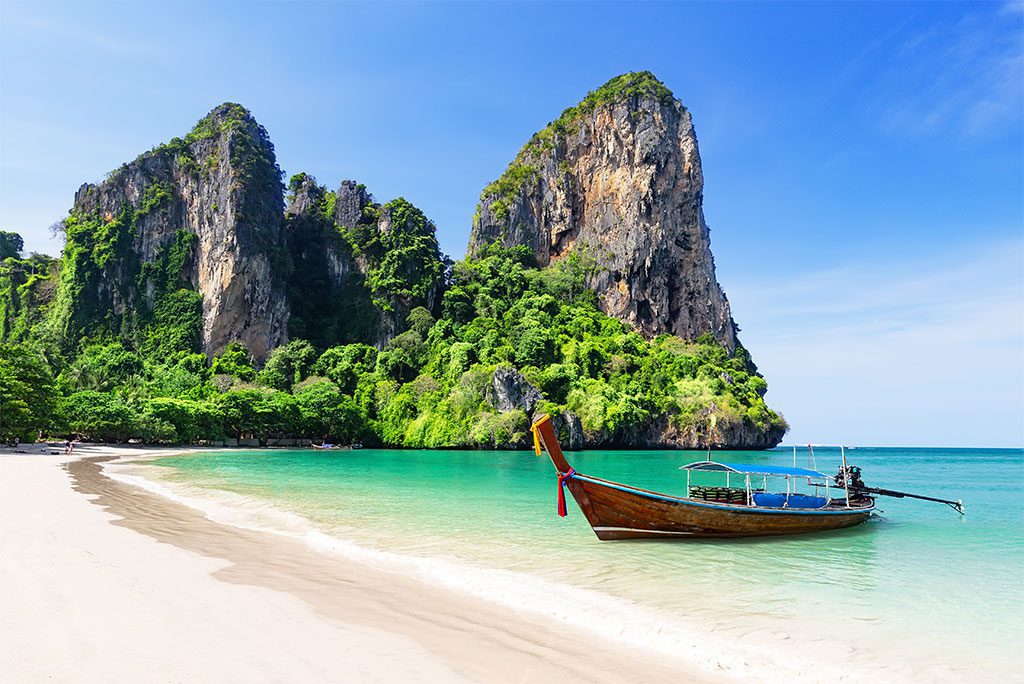
High limestone cliffs separate Railay (or Rai Leh), a small peninsula in southern Thailand, from the rest of the mainland. Rock climbers from all over the globe go to these cliffs, but the area’s stunning beaches and tranquil vibe make it a popular tourist destination in Thailand as well.
Bungalow resorts have taken up almost all of the developable ground along the eastern and western coasts of the peninsula, and construction is slowly making its way into the surrounding jungle. At least there aren’t any skyscrapers here, and most of the structures are tucked away in the shade of trees or situated in aesthetically pleasing garden settings.
4. Koh Tao
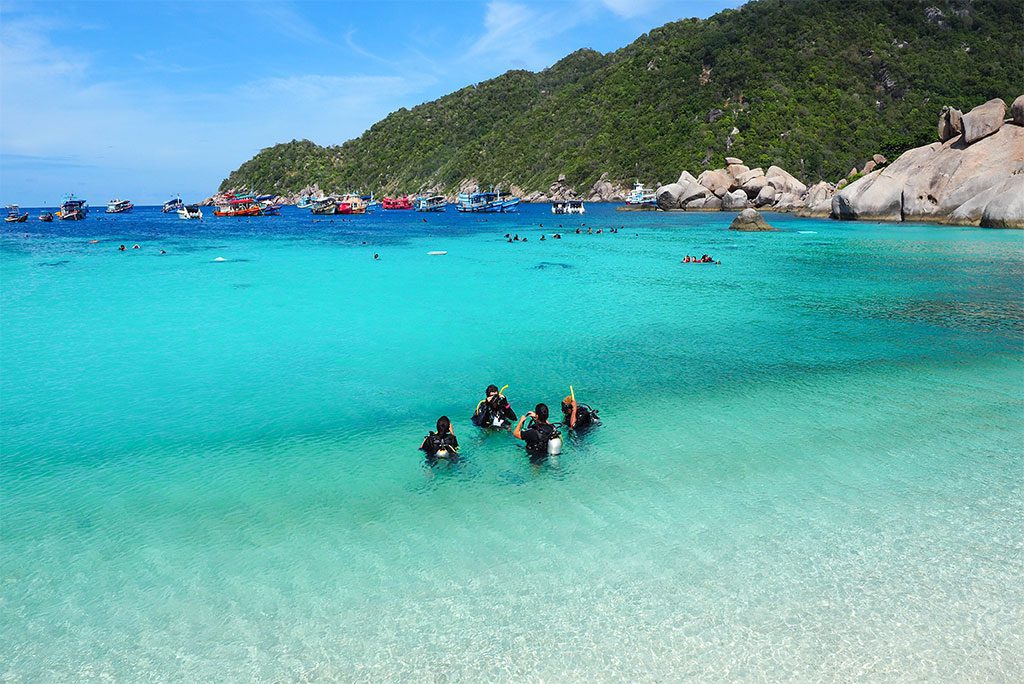
Tao, a small island 21 km (13 mi) in size, is located off the southeast coast of Thailand. The island was virtually deserted until the late 1900s, and it has only lately been developed as a tourist attraction. More and more people are learning about the island’s natural charms, such as its white sand beaches, lush green forests, and impressive granite rock formations, and this is leading to the replacement of the island’s bare-amenity bungalows with high-end resorts.
Koh Tao is widely regarded as one of the world’s best spots for underwater exploration. Many people go to Koh Tao in order to get their first scuba diving certification or improve their existing one because of the island’s abundance of shallow bays, gentle currents, and beautiful coral reefs.
Mae Hat, the island’s main town, and various locations throughout the island are home to a number of scuba diving centers. Butterfly fish, batfish, whale sharks, and bull sharks are just a few of the many species of fish that can be found on Koh Tao’s coral reefs.
Since the Thai word for turtle is “tao,” it has been speculated that the island was given that name due to its resemblance to a turtle. Despite the rising number of tourists visiting Koh Tao each year, the island is home to multiple nesting sites for endangered hawksbill and green turtles. Koh Tao’s dive centers have collaborated in recent years to protect the island’s turtle-nesting beaches.
In addition to these two main attractions, rock climbing, sailing, mountain biking, and game fishing are all quite popular on the island. There are a number of Thai culinary and yoga schools in Mae Hat. Sairee Village is the island’s hottest location, complete with a wide variety of restaurants, bars, and nightlife options.
3. Chiang Mai
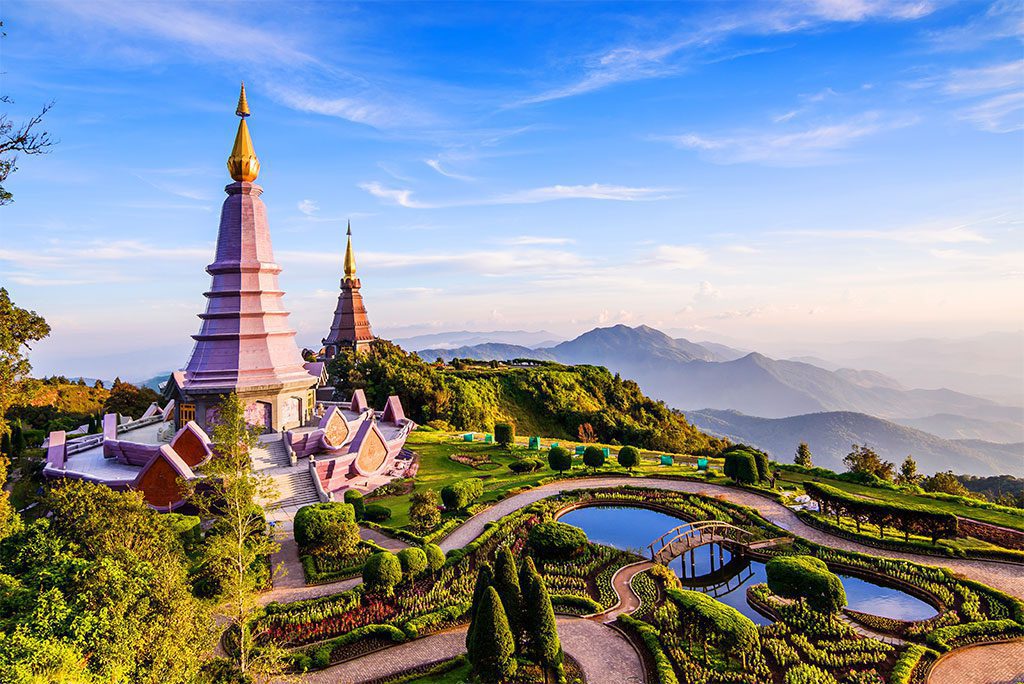
Chiang Mai is a thriving city in northern Thailand that serves as a popular jumping-off point for visitors interested in seeing the region’s verdant scenery, indigenous hill tribes, and exciting outdoor activities. Chiang Mai, on the other hand, is a sizable and culturally significant city where ancient and contemporary Thai buildings and customs coexist.
Old city walls and scores of stunning antique temples can be seen during a stroll through the historic center. Wat Phrathat Doi Suthep, however, is outside of Chiang Mai on a mountaintop above the city, and it is the most well-known of all of these temples. Today’s Chiang Mai is home to a plethora of attractions, from thriving handicrafts markets to beautiful botanical gardens and an elephant nature park where guests can feed and wash the majestic animals.
Chiang Mai is home to a plethora of tour operators offering activities like hiking, mountain biking, ziplining, river rafting, and trips to native hill tribes for those looking to take in the region’s natural splendor and sense of adventure.
2. Bangkok
Bangkok, the capital and biggest city in Thailand, is a teeming metropolis filled with skyscrapers, palaces, temples, nightclubs, marketplaces, and streets lined with sellers offering souvenirs and delicious street cuisine. Bangkok has been called a “concrete jungle” due to its congestion, pollution, and lack of green space, but the city is not devoid of natural beauty because of its many canals, parks, and tropical flowers.
Bangkok, the capital and largest city in Thailand, is a diverse metropolis with something for everyone. Khao San Road, the popular tourist route, is a fantastic spot to start because of the variety of attractions, low prices, and exciting nightlife it offers. Among the city’s many famous landmarks is the revered Wat Phra Kaew, home to the Emerald Buddha.
Animal parks, water parks, and theme parks all provide enjoyable experiences for families. Amazing shopping can be found at Bangkok’s many marketplaces and malls, as well as the city’s famous floating markets. Thai boxing fights are held in sporting arenas.
You can find great food in Bangkok from any number of sources, including street vendors, market stalls, and restaurants that cater to every possible budget and palate. It also has a reputation for a raucous nightlife scene.
Bangkok’s traffic is so bad that the Skytrain, the subway, and the tuk-tuks are your best bets for getting around the city. Taking a boat ride around Bangkok’s canals is a fantastic way to get a feel for the city.
1. Ko Phi Phi
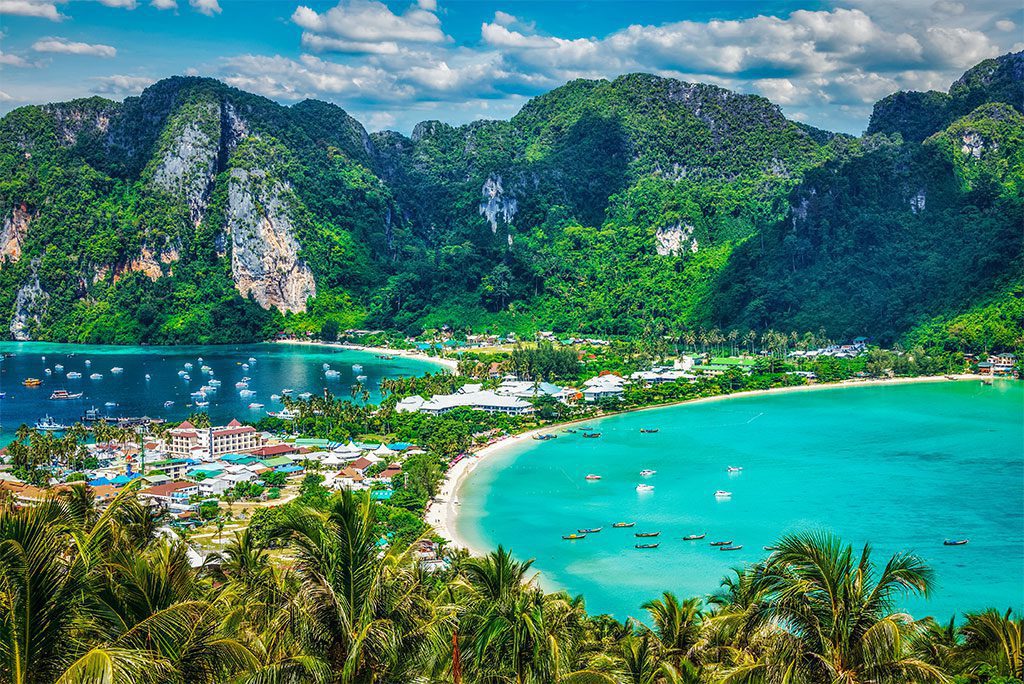
The beautiful Phi Phi Island archipelago can be found just off Phuket’s southern coast in Krabi Province. Ko Phi Phi Don, the biggest of the islands, is a tourist hotspot known for its stunning limestone cliffs, tranquil environment, and sunny beaches.
Most visitors go to Tonsai Bay and Long Beach, but Phak Nam Bay and other less-visited beaches provide a peaceful refuge from the masses. Hiking up to Phi Phi Viewpoint rewards visitors with breathtaking views of the whole island.
Tonsai, located smack in the center of the island, is a busy little village. This picturesque village is the beating heart of Ko Phi Phi, and it’s full of delicious restaurants and exciting nightlife.
Koh Phi Phi Leh, a stunning tropical paradise with crystal-clear waters and pristine limestone cliffs, is located about a mile to the south of Phi Phi Don. The island’s geographic heart is Maya Bay, the breathtaking location for the film The Beach.


